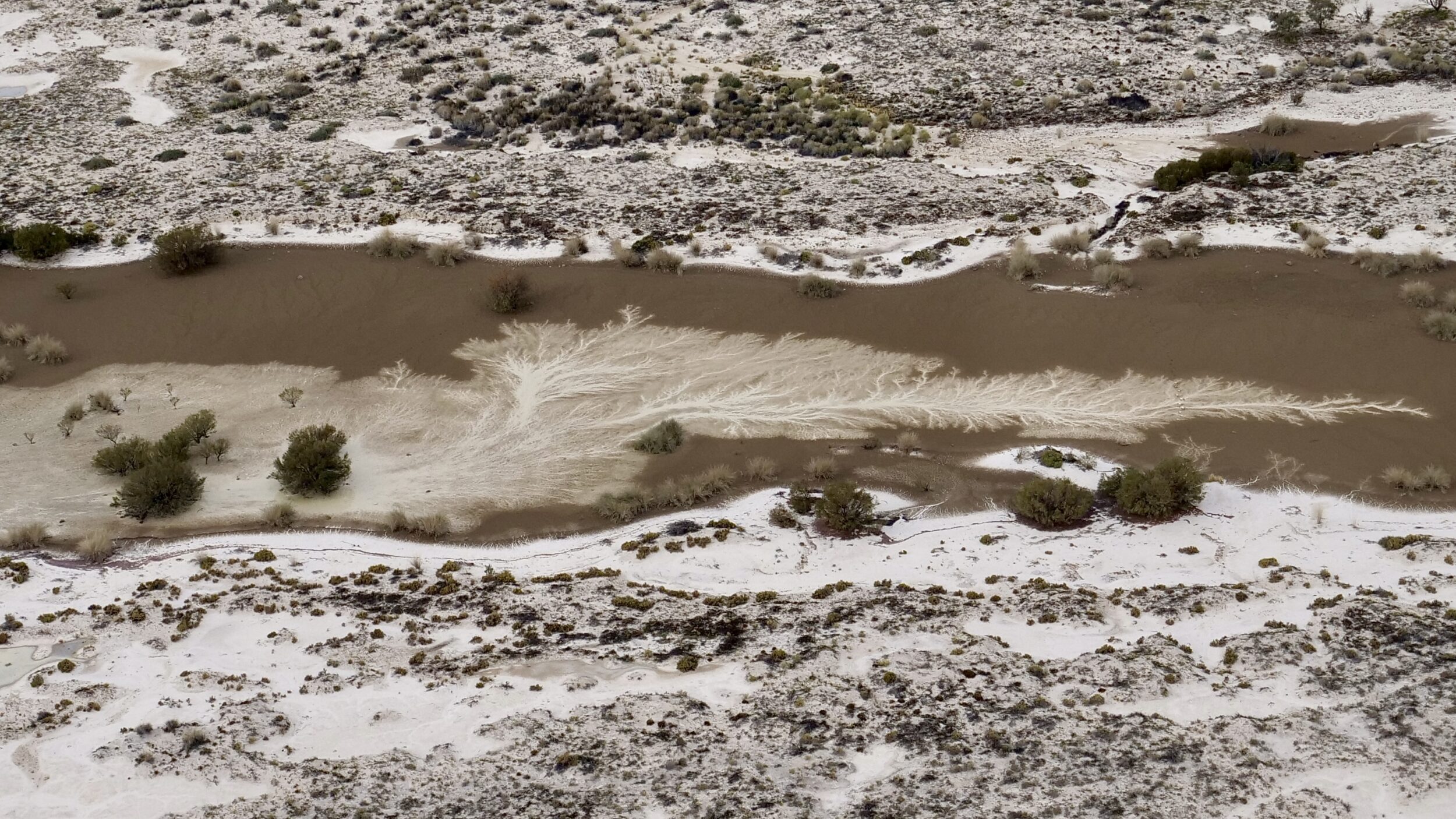Many millions of years before any words were spoken on “our” planet, it was already being “adorned”, “painted” and “sculpted” by the greatest of all “abstract artists”.
Relative to a human’s lifespan – or an empire’s or a civilisation’s – some of Nature’s creations are “permanent”.
Others are “ephemeral”, even fleeting.
Uluru is “permanent”, a crisp morning’s hoar frost is “fleeting”.
In an arid landscape, the interactions between sand, wind and water can produce particularly beautiful “abstracts”.
Most of these “artworks” are ephemeral or fleeting.
I photographed the pictured example at 9.10 am on 11 June 2023, as we flew above one of the Lake Eyre Basin’s many ephemeral watercourses.
In this instance, the sandy-bottomed river had recently carried a relatively substantial amount of water, but was already well on the way to “drying out”.
The early stages of the “drying out” had produced a briefly-exquisite “sand painting”.
Soon, the riverbed’s sandy surface would become thoroughly dry, and the wind would erase the “etching”.
Musical bonus
Over a few hours, on one day in May 1976 pianist Keith Jarrett recorded a series of spontaneous solos.
The Paris studio had been booked for a full day, for his contribution to a French film soundtrack, which was recorded quickly.
Jarrett loved this studio’s piano so much that he decided to use the “free” hours; the result was issued the next year as a double-LP, Staircase.
Side Four is called Sand.
This is its conclusion, “Part 3”:
